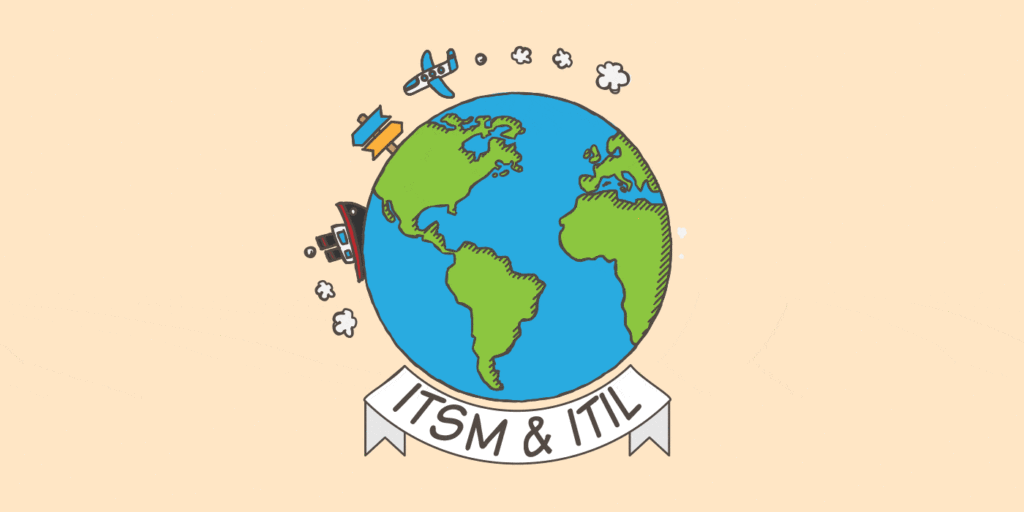Ever wanted to know more about the current state of IT service management (ITSM) and ITIL adoption. Especially in terms of ITIL in North America? What has been achieved by organizations and where they have struggled? If so, then this article – based on my experiences – is for you.
Plus, if you’ve never wondered about the above, this article might still make for great reading in understanding how your organization compares to others – with a particular slant on ITIL in North America.
ITIL in North America: The current state of adoption
When looking at ITSM and ITIL adoption in the US and Canada, both countries are similar in the context of their adoption of ITSM, with Canada having started a bit earlier than the US. That, while ITIL has presented a full lifecycle approach since 2007, most North American organizations have only adopted a limited set of ITSM processes focused on service operation and some aspects of service transition. Sound familiar?
Then the early 2010s, ITIL in North America saw the focus on service catalog increase, but primarily focused on end-user services and the automation of what’s often called a request catalog.
Now, more recently, driven by the need to improve (business) alignment, reduce technical debt, and improve project prioritization, organizations have begun to focus on business relationship management (BRM), demand management, and service portfolio management.
The main reasons for all this are that, for many organizations, the ITIL framework has been brought to the organization through the sponsorship of the Infrastructure & Operations function. And the application development teams often don’t relate to ITIL or believe that ITIL best practices apply to them.
Other popular ITSM and IT management approaches
The current focus in North American is very much on: Agile, DevOps, and Lean practices. Plus, there’s a minor interest in COBIT from an audit and regulatory perspective. However, there’s almost no interest in ISO standards in the US, and it’s very limited in Canada.
There’s now an emerging focus on how the various ITSM approaches/frameworks work together, and to help customers Pink Elephant’s messaging around this has focused on the concept of Integrated Service Management.
Finally, the industry is also seeing an increased interest in leadership and organizational-change topics related to leading and managing people through change and transformations. This is in part driven by the energy and focus around digital transformation.
ITIL in North America: Good and poor ITIL behaviors
While most organizations that have adopted aspects of ITIL have made significant improvements to their support practices around break/fix and request fulfillment (the aforementioned service operation aspects that includes a focus on incident management, service request fulfillment, and the adoption of a request catalog). These same organizations continue to struggle with problem management.
Where at best they do reactive problem management for major incidents. They also haven’t addressed event management workflow, but have installed monitoring tools without considering the correlation logic or workflow automation.
And, even though ITIL has provided guidance around service orientation since 2007, most organizations will orient themselves around technology versus systems, products, or services. This has caused most configuration management process projects to focus on inventory management or IT asset management.
ITIL in North America: A key ITSM learning point
North America tends to be tool-focused and organizations drive their improvement projects around tool implementation and configuration. Thus, many of the process elements or policies that are configured into the tool have not been well socialized or agreed by the organization.
This means that, for the most part, the process improvement hoped for is only marginally successful. Organizations instead need to understand that process improvement projects (PIPs) must first be considered as organizational change initiatives which have a process and tool element.
How the new version of ITIL will help ITSM professionals
I see two key improvements in the ITIL update that will support improved customer value delivery:
- The update takes a systems approach in that it presents ITSM as an end-to-end value system. While the end-to-end model was presented in the last edition (of ITIL) it was not as explicit as it could have been. The key message here is that organizations need to manage the full system to manage quality, speed, and cost. Hopefully this will send a clear message that picking and choosing which processes organizations focus on is not a long-term strategy.
- In previous iterations of ITIL, the process model has not included integration with build or project management practices. This has created a false sense of separation between IT professionals focused on projects or software development and those who look at ITIL as a best practice framework. This update will bring these two elements together for the first time which is critical.
This is in line with how ITSM is expected to change over the next few years.
ITIL in North America: How ITSM will change by 2020 (and beyond)
There’s an emerging approach to leverage product/service-oriented cross-functional teams. This model of team structuring has been around for some time in other industry verticals but has recently been a focus of Agile and now DevOps. Establishing, leading, and managing cross-functional teams is a new organizational paradigm and takes different approaches to traditional management models. I see this topic becoming very relevant by 2020.
Also, the IT supply chain continues to grow in complexity in relation to vendor integration. Organizations will look to service and process governance structures such as process ownership, service management offices (SMOs), and service integration – or service integration and management (SIAM) – functions to support the goal of bringing more consistency and coherence into their overall value systems.
How to best prepare for this change
To move with the times, ITSM professionals will need to be multi-lingual – in that they need to have a foundation in ITIL but also understand and know how to integrate subjects around Agile, Lean, DevOps, SIAM, etc.
Most conversations I have with clients now include all these concepts and I’m certain that it’s a trend that we will see more, rather than less, of.
So, that’s how I see the ITSM and ITIL status quo – plus the future – what would you add?
Troy DuMoulin
Troy is an experienced Executive Consultant with a solid and rich background in business process re-engineering. He holds the Management Certificate in ITIL and has extensive experience in leading service management improvement programs. His main focus at Pink Elephant is to deliver strategic and tactical level consulting services to clients based upon a demonstrated knowledge of organizational transformation issues. Troy is a frequent speaker at ITSM events and is a contributing Author for the ITIL “Planning to Implement IT Service Management Book.” In addition he is a member of the Lead Architect Team for ITIL v4.


5 Responses
Any chance of bringing IT Asset Management formally into ITIL-v4?
Hello Danny, I have been given approval to share with you that indeed IT Asset Management will be called out as its own independent practice in the ITIL 4 publication.
Troy, you have done a masterful job to concisely articulating key points from potentially broad subject areas. I would add the further adoption of service management as a platform – particularly for automating workflows within an organization or business (as opposed to customer facing). ITSM and ITIL are being held to a higher level of accountability on the value they provide.
I believe the summarization is just perfect. I have rather observed similar behavior of ITIL implementation in EMEA and ASEAN regions as well.
I believe for bringing the true affectivess of ITIL and its value we need buyin from ITSM tools implmentation stakeholders. Many a times process definition goes in parallel with ITSM tools resulting the real value of processes on just paper.
This issue also limits and restricts the effectiveness of integration to just service operations and an ideal Service integration cut across entire service lifecycle remains passive.
I believe to bring forward the values of ITIl framework organizations may need to adopt Capacity , Info Security and IT Service Continuity Mgmt. Processes too.
Lastly the CSI process, if the principles and guidance of this process is brought to life during early stages of build, transition and transformation Customers shall certainly see gooodness of ITIL
Regards
Mohsin
Insightful piece on the current state of ITSM and ITIL and what the future has in store… Good read!